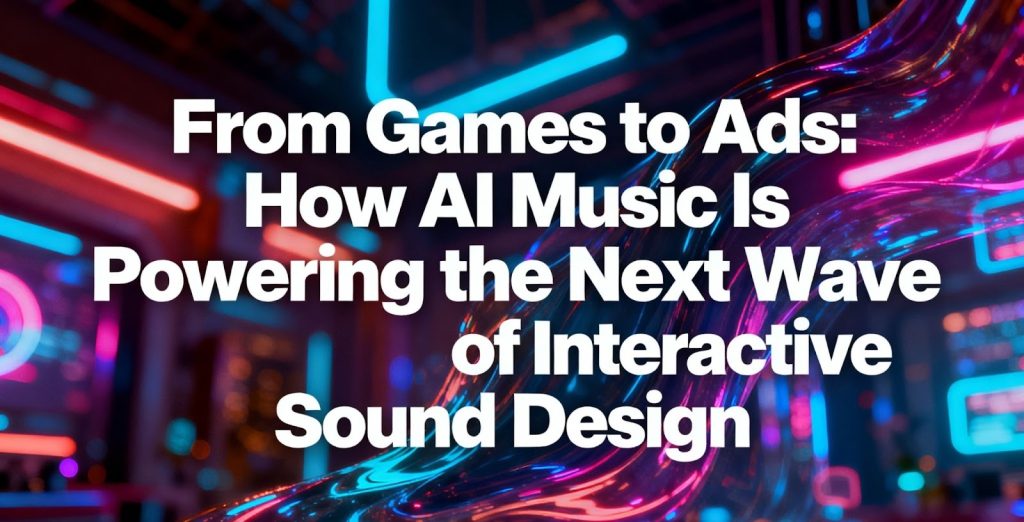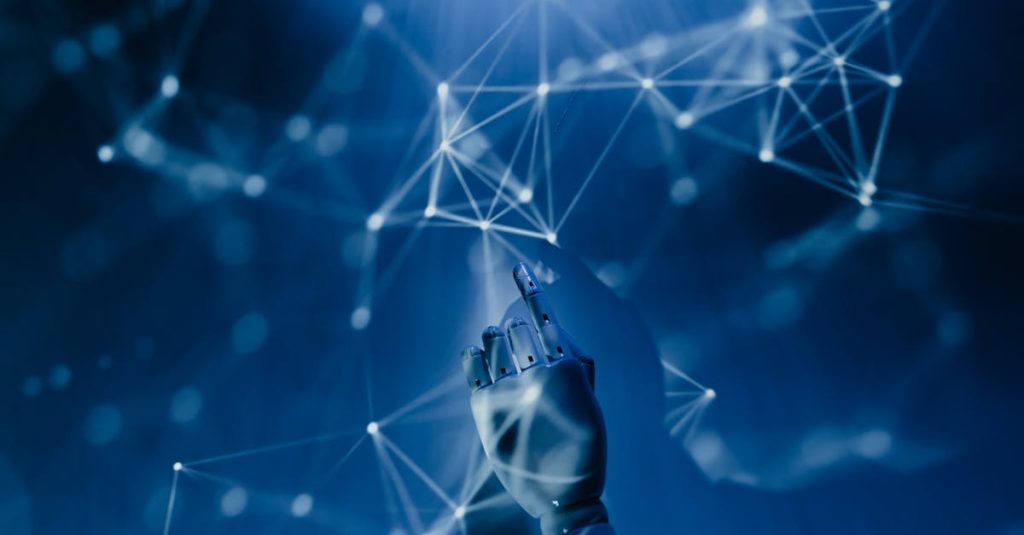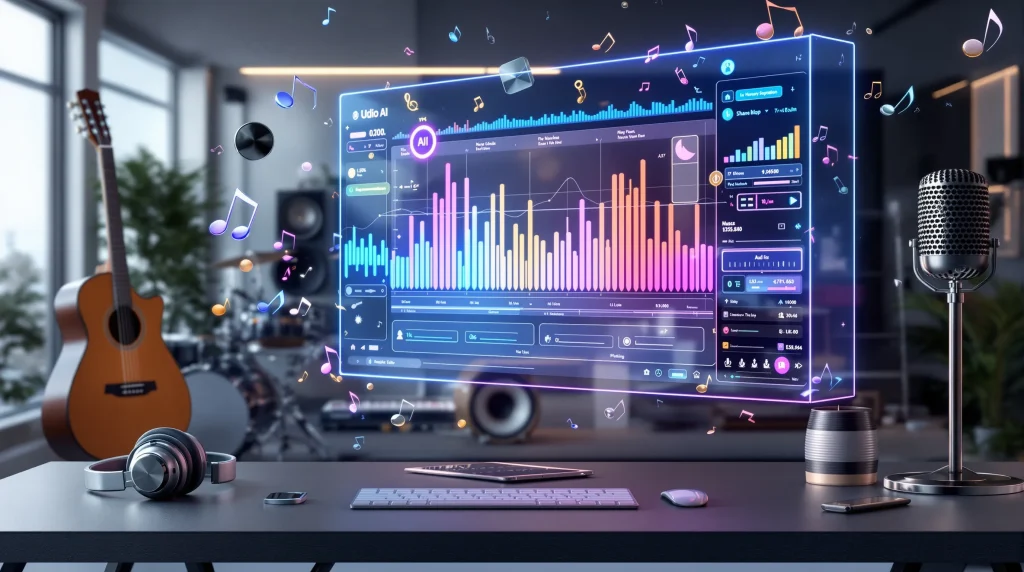ゲームや広告のためのAI音楽は、ジェネレーティブアルゴリズムとリアルタイムの応答性を融合させることで、クリエイターが没入感のあるオーディオ体験を構築する方法を再定義しています。インタラクティブサウンドデザインの進化に伴い、制作者はユニークで適応性の高いサウンドトラックへの要求が高まる中、従来の作曲ワークフローでは規模の拡大に対応することが難しくなっています。この記事では、AI主導型オーディオのコアコンセプトを探り、ビデオゲームや広告への影響を検証し、次の点を強調します。 MurekaのAI音楽生成・編集プラットフォーム, 2025年にダイナミックでロイヤリティ・フリーのサウンドスケープを活用しようとする音楽家、開発者、マーケティング担当者に、新たなトレンドと実践的なベストプラクティスを調査し、明確な洞察を提供する。.
AI音楽とは何か、そしてインタラクティブ・サウンドデザインをどう変えるのか?
AI音楽は従来のサウンドデザインとどう違うのか?
AI音楽は、機械学習モデルを使ってユーザーのインタラクションに基づいて即座にオーディオを生成し、適応させることで、手作業による方法とは異なります。膨大な音楽要素のライブラリを分析することで、生成的なアルゴリズムは、ゲームプレイや視聴者の行動に反応する作曲を組み立てます。例えば、プレイヤーの体力が低下すると、AIがバトルテーマの強度をシフトさせることができるため、事前に複数のトラックを合成する必要がなくなり、制作スケジュールが短縮されます。この自動化されたアプローチは、クリエイティブな柔軟性を高めると同時に、手作業による編集のオーバーヘッドを削減し、真に反応するサウンドスケープへの道を開きます。.
AIを活用したインタラクティブ・サウンドデザインの主な特徴とは?
AIを活用したインタラクティブなサウンドデザインは、ダイナミックなオーディオ体験を可能にする3つのコア機能を提供します。AIを活用した適応性により、ユーザーのアクションに合わせて音楽が進化し、応答性によりサウンドエレメントがリアルタイムで調整され、パラメータ駆動型のバリエーションにより、手動で再コンポジションすることなく、無限の音楽の組み合わせが可能になります。.
| 特徴 | 特徴 | 没入型インパクト |
|---|---|---|
| 適応性 | コンテキストを考慮したトランジション | ゲームプレイの状態にオーディオを合わせる |
| 応答性 | リアルタイム変調 | 出来事が展開するにつれ、感情的な利害関係が強化される。 |
| 手続きのバリエーション | アルゴリズムによる組み換え | セッションごとにユニークなリスニング体験を提供 |
| パラメータ駆動制御 | 強度調整可能 | デザイナーがムードやテンポを微調整できるようになる |
これらの機能を組み合わせることで、音楽の進行とインタラクティブ性を一致させ、ゲームや広告におけるAIの役割の基礎を確立することで、エンゲージメントを高めることができる。.
AI音楽の導入をリードする業界は?
AI音楽の採用が最も進んでいるのはビデオゲームと広告で、これはインパクトが強く拡張性の高いオーディオソリューションが求められているためです。ゲームでは、スタジオがアダプティブサウンドトラックを活用して没入感を深め、プレイヤーの旅をパーソナライズしています。マーケティングでは、ブランドはアルゴリズムで調整されたジングルを展開し、かつてないスピードで特定の層に響かせます。VRトレーニングやインタラクティブなインスタレーションなど、他の分野でもジェネレーティブオーディオが研究されています。.
主な採用要因は以下の通り:
- 迅速な反復のための合理化された生産ワークフロー
- フルスコアリングチームを雇用するよりもコスト削減
- ロイヤリティ・フリーのトラックをオンデマンドで生成する機能
インタラクティブメディアや広告代理店が、クリエイティブパイプラインにAI音楽プラットフォームを最初に組み込むことが多いのは、こうした利点があるからだ。.
AI音楽はビデオゲームのサウンドスケープにどのような革命をもたらすのか?
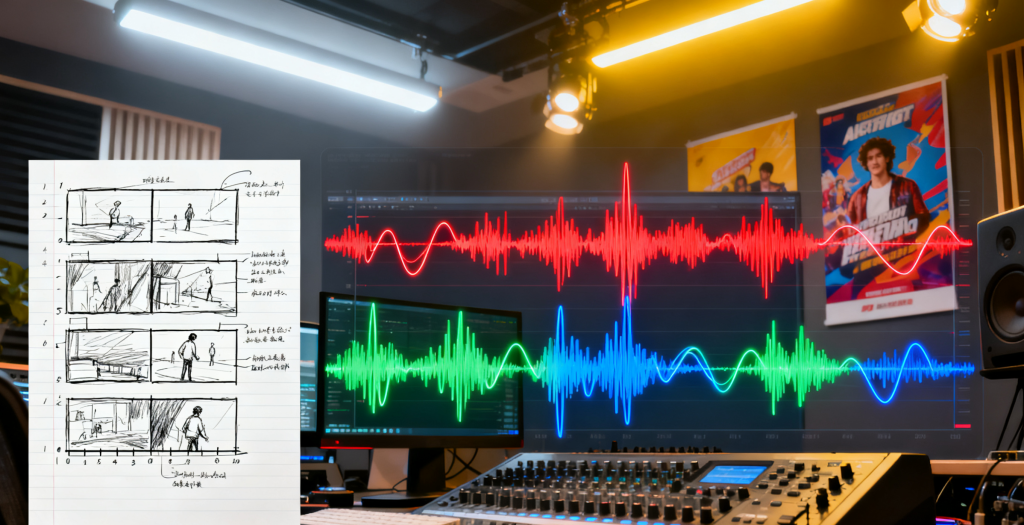
アダプティブ・サウンドトラックとは何か?
アダプティブサウンドトラックは、ゲームプレイの変数に基づいて音楽要素を修正するAIを使用し、ゲーム内のイベントやプレイヤーの選択に沿ったオーディオを実現します。キャラクターの健康状態、環境の種類、テンポなどの要素を分析することで、ジェネレイティブエンジンは穏やかな探索テーマと激しい戦闘シークエンスの間のシームレスな移行を生み出します。例えば、AIシステムはボスの出現時に自動的にパーカッションの要素を重ね、手動で編集することなく緊張感を高めることができる。このようなリアクティブなアプローチは、プレイヤーの感情移入を深め、より強い主体性を育む。.
適応型ゲームサウンドトラックの生成に関する研究は、人間とAIのコラボレーションを通じてプレイヤーの関与を高めるAIの可能性を強調し、ゲーム内の行動に基づいて直感的に修正できるようにしながら開発費を削減することを目指しています。.
AIはゲームオーディオ制作のワークフローをどのように効率化するか?
AIは、ルーチンワークを自動化し、複数の音楽バリエーションを即座に生成することで、ゲーム音楽の作曲と反復に必要な時間とリソースを劇的に削減します。開発チームは、テンポ、楽器編成、ムードなどのパラメータを定義し、AIに数十のトラックオプションを数分で生成させることができます。これにより、作曲家は反復的なシーケンス作業ではなく、ハイレベルなクリエイティブ・ディレクションに集中することができます。その結果、スタジオは新しいサウンドのアイデアを試しながら厳しい納期を守ることができ、インディーズとAAA両方の開発サイクルを加速させる効率性を高めることができる。.
インディーゲームとAAAゲームにおけるプロシージャルオーディオの役割とは?
プロシージャルオーディオとは、コード駆動型のルールに基づいて進化する、アルゴリズムで生成されたサウンドエフェクトや音楽のことです。インディーズタイトルでは、プロシージャルな手法により、小規模なチームが大規模な予算をかけずにリッチなオーディオランドスケープを作成することができます。AAAスタジオは、このテクニックを応用して、プレイセッションごとに異なる聴覚体験を提供する広大な世界を作り上げています。プロシージャルなエフェクトとAIが作曲した音楽を組み合わせることで、ゲームは、プレイヤーの行動や世界の状態、さらには長期的なキャンペーンにおけるプレイヤーの行動パターンにまで適応する、レイヤー化されたパーソナライズされたサウンドスケープを実現します。.
ゲーム開発者はMurekaのようなAI音楽ツールをどのように統合できるか?
ゲーム開発者は、以下を統合することができる。 MurekaのAI音楽ジェネレーター&エディター ダイナミックオーディオパラメーターとミドルウェア対応のステムをエクスポートすることで、既存のエンジンに組み込むことができます。Murekaのプラットフォームは、指定したジャンルやムードに合わせてロイヤリティフリーのトラックを生成し、インラインエディターでインストゥルメンテーション、インテンシティカーブ、ループポイントを調整します。チームはこれらのステムをUnityやUnrealなどのエンジンにインポートし、ゲームイベントとリンクさせ、トランジションルールを設定するだけです。この合理化されたパイプラインは、ジェネレーティブAIと使い慣れたオーディオミドルウェアを橋渡しし、スタジオが既存のワークフローを見直すことなく、インタラクティブなサウンドデザインを採用できるようにします。.
AI音楽はどのような形で広告とソニック・ブランディングを形成しているのか?
AIはどのように広告のためにパーソナライズされ、ターゲット化された音楽を作成することができますか?
AIは、視聴者の属性、キャンペーンの目的、感情的なトリガーを分析し、特定のセグメントに共鳴する楽曲を作成することで、パーソナライズされた広告音楽を作成します。マーケティング担当者は、希望するテンポ、楽器編成、ブランド・トーンなどの変数を定義すると、システムが複数のジングル・オプションを生成する。例えば、AIエンジンは、若者向けのキャンペーンには明るく陽気なテーマを、ウェルネス広告には落ち着いたオーケストラのモチーフを生成することができる。このようなターゲットを絞ったアプローチにより、リスナーはそれぞれの地域の嗜好に最適化されたサウンドスケープに出会い、想起率とエンゲージメントの指標を高めることができる。.
マーケティングキャンペーンにおけるAI音楽の費用対効果とは?
AI音楽は、ライセンス料を不要にし、フルスコアリング・セッションへの依存を減らすことで、マーケティング担当者に大幅なコスト削減をもたらします。ジェネレーティブ・プラットフォームは、ロイヤリティフリーのトラックをオンデマンドで制作するため、キャンペーンチームは、使用ごとにコストをかけることなく、迅速に反復することができます。さらに、スケーラビリティにより、何百もの広告バリエーションに、オンライン、ブロードキャスト、ソーシャルメディアなど、それぞれのチャンネルに合わせたユニークなサウンドトラックを、予算を増やすことなく提供することができます。このコスト効率により、あらゆる規模のブランドが、厳しい財政的制約の中で、高品質で差別化されたオーディオ資産を利用できるようになります。.
AI音楽はソニック・ブランディングを通じてどのようにブランド・アイデンティティを高めるのか?
ソニックブランディングは、ブランド価値や個性を強化する一貫した認識可能なオーディオキューに依存しています。AIプラットフォームは、メロディフック、楽器編成、トーンパレットを正確にコントロールすることで、特徴的なモチーフ、スティンガー、サウンドロゴの作成を容易にします。ブランドは核となるテーマを固定し、長尺の動画、短いソーシャルクリップ、インタラクティブなウェブ体験など、さまざまなコンテクストに適応するバリエーションを生み出すことができます。この統一されつつも柔軟なサウンドアイデンティティは、感情的なつながりを強化し、視聴者が複数のタッチポイントでブランドコンテンツを即座に認識できるようにします。.
AIが生成する音楽から最も恩恵を受ける広告のタイプは?
短編の動画広告、製品発表キャンペーン、ブランド賛歌は、AIが生成した音楽と組み合わせることで最大の効果を発揮します。クイックなソーシャルビデオは、トレンドトピックに即座に適応するフックによってパンチが増します。製品発表会では、独自のセールスポイントを強調するカスタムテーマを、作曲家の追加料金なしで活用できます。ブランド賛歌は、コアとなるメロディを維持しながら、地域や季節を越えて進化し、一貫性と新鮮さを保つことができる。インタラクティブ広告や体験型マーケティングイベントでも、オーディエンスのエンゲージメントレベルに反応するリアルタイムのサウンドスケープが役立ちます。.
何がそうさせるのか ムレカのAI音楽プラットフォーム インタラクティブ・サウンドデザインのリーダー?
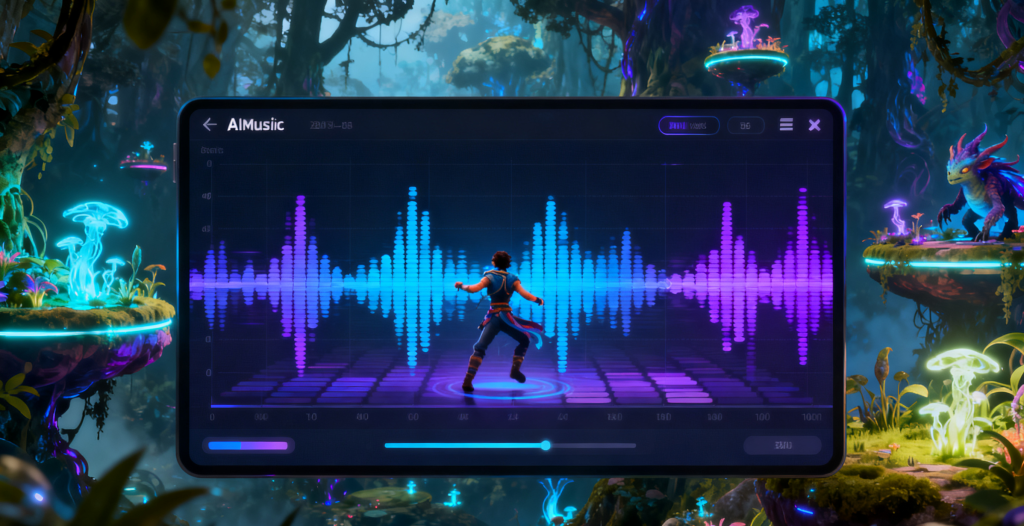
どのように ムレカAI音楽ジェネレーター ロイヤリティ・フリーのユニークな楽曲を制作するには?
ムレカの AI音楽ジェネレーター は、多様なインストゥルメンタル・ライブラリーで学習した高度な機械学習モデルを使用して、ユーザーが指定したムードやジャンルに合わせたオリジナル・トラックを作曲します。作曲者はテンポ、調号、強度プロファイルなどのパラメータを定義し、エンジンはユニークでロイヤリティフリーのステムを提供します。各トラックは、手続き的なバリエーション・ルールを採用し、2つとして同じ出力がないことを保証します。この迅速で自動化されたプロセスにより、チームは高品質のオーディオアセットを数日ではなく数分で調達することができます。.
どのようなカスタマイズ・オプションがありますか? Mureka AIミュージックエディター オファー?
について ムレカ AIミュージックエディターは、楽器のレイヤー、ボリュームエンベロープ、アレンジ構造を調整するためのきめ細かなコントロールを提供します。ユーザーは、パーカッション、ストリングス、シンセなど、個々のセクションをミュートしたり強調したり、ループポイントを編集してシームレスなトランジションを実現したり、ダイナミックシフトを制御するエモーショナルアークカーブを微調整したりできます。この直感的なインターフェースは、ジェネレーティブAIと従来のDAWワークフローを橋渡しし、サウンドデザイナーがAIで作曲されたコンテンツに慣れ親しんだ編集テクニックを適用できるようにします。カスタマイズは、複数のフォーマットでステムを書き出したり、プラットフォームを離れることなく特定のランタイム要件に合わせてトラックを調整したりすることも可能です。.
Murekaは、ゲームと広告の垣根を越えてコンテンツクリエイターをどのようにサポートしていますか?
Murekaは、ミュージシャン、ゲーム開発者、マーケティング担当者を支援し、アクセス可能な AI音楽ツール 既存のクリエイティブパイプラインに統合することができます。このプラットフォームのジャンルテンプレートとムードプリセットのライブラリは、インタラクティブオーディオのプロトタイピングを加速し、ロイヤリティフリーのライセンスはアセット管理を簡素化します。APIアクセスやエクスポート可能なファイルフォーマットは、ゲームエンジン、ビデオエディター、広告制作スイートとの互換性を保証します。教育リソースとコミュニティチュートリアルは、ベストプラクティスをミュージシャン以外の方にもわかりやすく説明し、趣味の方もプロの方も、オーディオの専門知識がなくても魅力的なサウンドスケープを作ることができます。.
インタラクティブメディアにおけるAI音楽の最新動向と未来予測とは?
ダイナミックでアダプティブなサウンドトラックの需要はどのように伸びているのか?
インタラクティブな体験がよりパーソナライズされ、没入的になるにつれて、ダイナミックで適応性のあるサウンドトラックの需要が急増している。2024年のレポートによると、ゲーム開発者の60%以上がAIを活用したオーディオツールを検討しており、広告代理店もこれに追随してオーダーメイドのジングルを大規模に作成しています。インタラクティブなストーリーテリングプラットフォームやバーチャルリアリティ体験も、エンゲージメントを維持するためにジェネレーティブオーディオに依存している。消費者の期待がリアルタイム対応にシフトするにつれ、スタジオやブランドは、ユーザーの行動や文脈に合わせて調整するAI音楽ソリューションをますます採用するようになり、2026年にはアダプティブ・サウンドトラックが業界標準になるでしょう。.
映画音楽制作のためのAI音楽生成における最近の研究は、EchoScriptのような高度なモデルが、生成AIを詳細なメタデータで微調整することによって、文脈を考慮したサウンドトラックを作成し、メロディーの一貫性と感情の深みの課題に対処できることを示している。.
イノベーションを牽引する生成AIモデルの進歩とは?
最近のジェネレーティブAIモデルは、トランスフォーマーアーキテクチャと拡散技術を取り入れ、音楽の一貫性、より長い形式の作曲、ジャンルの多様性を向上させている。これらの進歩により、AIは短いループをつなぎ合わせるのではなく、和声進行やテーマ展開といった高次の音楽構造を理解できるようになった。研究者たちはまた、特定の作曲家や時代を模倣するスタイル変換アルゴリズムを開発し、新たな創造の可能性を開こうとしている。モデルがより効率的になるにつれて、オンデバイスでの生成が登場し、サーバーのラウンドトリップなしに、インタラクティブなアプリやゲームがアダプティブ・オーディオをネイティブに生成できるようになるだろう。.
AI音楽はサウンドデザイナーやコンテンツクリエイターにどのような影響を与えるのか?
AI音楽は、定型的な作曲作業から、クリエイティブなディレクション、キュレーション、ジェネレーティブなアウトプットの微調整へとフォーカスを移すことで、サウンドデザイナーの役割を再定義する。デザイナーは、ムードボード、パラメータ・プリセット、ナラティブ・フレームワークを通じてAIエンジンを導くオーケストレーターとして機能する。このコラボレーティブなワークフローは、アーティスティックなビジョンを維持しながら、制作の質とスピードを上げることを約束する。コンテンツクリエイターは、深い音楽的トレーニングを必要とせずにカスタムサウンドトラックへの幅広いアクセスを期待でき、インディーズスタジオやマーケティングチームを問わず、ハイエンドのオーディオ制作を民主化することができる。.
クリエイターやデベロッパーがAI音楽を最大限に活用するには?
AI音楽をゲームや広告のワークフローに組み込むためのベストプラクティスとは?
AIミュージックを効果的に統合するために、チームはまず、生成パラメーターの指針となる、感情的でインタラクティブな目標を明確に定義することから始めるべきです。AIが生成したステムを他のオーディオリソースと同じように扱うアセットパイプラインを確立し、ミドルウェアを通じてステムをエンジン内イベントや広告編集のタイムラインにリンクさせる必要があります。バージョン管理とメタデータのタグ付けは、複数のバリエーションの整理を確実にする。ターゲット視聴者との反復テストにより、どのダイナミックなトランジションがエンゲージメントを高めるかが明らかになる。AIツールと伝統的なミキシングやマスタリングの手法を組み合わせることで、クリエイターはプロジェクトの目的に合った、洗練された適応性の高いサウンドトラックを実現できます。.
非音楽家がAI音楽プラットフォームを効果的に活用するには?
音楽家でなくても、ジャンル・プリセットとムード・スライダーを使って基礎となるトラックを生成し、簡単なカスタマイズ・ツールを適用してアレンジを洗練させることで、AIミュージック・プラットフォームを活用することができます。ステップ・バイ・ステップのチュートリアルとテンプレート・ライブラリにより、初心者はテンポ、楽器編成、強度カーブが感情に与える影響を理解することができます。あらかじめ作成されたステムを一般的な編集ソフトウェアにエクスポートすることで、ボイスオーバーやサウンドエフェクトとの基本的なレイヤーが可能になります。自信がついてくれば、コード進行の微調整やカスタム楽器サンプルの追加など、より高度なエディタ機能を試すことができ、正式な音楽トレーニングを受けなくてもプロフェッショナルな結果を出すことができます。.
ユーザーが知っておくべきライセンスとロイヤリティ・フリーの留意点とは?
AI音楽プラットフォームは、多くの場合、商用・非商用プロジェクトを問わず包括的な使用権を与えるロイヤリティフリーのライセンスを提供している。ユーザーは、プラットフォームが、使用ごとに料金を支払うことなく、永続的でワールドワイドなライセンスを発行していることを確認する必要があります。二次的著作物に関する条件を確認し、生成された楽曲がプロジェクト専用であることを確認することが重要である。AIサービスを選択する際、クリエイターは、プロバイダがユーザー生成コンテンツの所有権を主張しないことを確認する必要があります。明確なライセンシングポリシーが法的障壁を取り除き、ゲーム、広告、映画、インタラクティブな体験において、AIが作曲した楽曲のシームレスな展開を可能にする。.
ゲームや広告のAI音楽についてよくある質問とは?
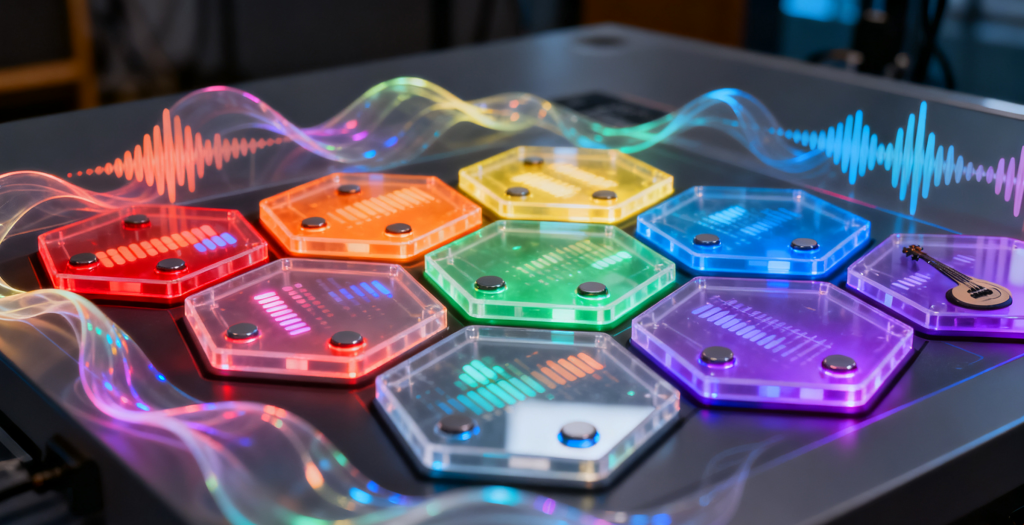
ゲームの音楽制作にAIはどのように活用されているのか?
AIは次のような形でゲームに使われている。 アダプティブ・サウンドトラックの生成 プレイヤーのアクションに反応し、ゲーム内の変数に基づいてバトルテーマ、アンビエントループ、トランジションエフェクトの構成を自動化することで、没入感を高め、制作を効率化します。.
AIはCMのオリジナル音楽を作れるか?
そう、AIはできる。 ロイヤリティ・フリーのオリジナル楽曲を作曲する キャンペーンの目的、ブランドの個性、視聴者の属性を分析することで、マーケティング目標に沿ったテーラード・トラックを提供し、チャンネルをまたいでスケールします。.
インタラクティブ・メディアに最適なAI音楽ジェネレーターとは?
トップクラスのAIミュージックジェネレーターは、アダプティブオーディオ、シームレスなステムエクスポート、内蔵エディターに特化しています。ジャンルの多様性、ムードプリセット、リアルタイムパラメータコントロール、ロイヤリティフリーライセンスを提供し、ゲームオーディオワークフローと広告制作パイプラインの両方に適しています。.
AI音楽は従来のサウンドデザイナーにどのような影響を与えるのか?
AI音楽は、従来のサウンドデザイナーを、作曲の実務から、クリエイティブなディレクション、パラメーターのキュレーション、品質保証に重点を置いた役割へとシフトさせ、反復的なシーケンス作業から解放し、より高度な芸術的貢献を可能にする。.
AI音楽は本当にロイヤリティフリーなのか?
AI音楽が真にロイヤリティフリーとなるのは、プラットフォームが、継続的な使用料なしに、永続的かつ世界的な使用権を提供し、生成されたコンテンツの所有権を明確にし、商業的展開の許可を明示することで、クリエイターの法的安全性が確保される場合である。.
人工知能とサウンドデザインを融合させることで、ゲーム、広告、そしてその先に広がるオーディオイノベーションの新時代が到来しました。適応型サウンドトラックとジェネレイティブツールにより、クリエイターはパーソナライズされた没入型体験を、これまで以上に迅速かつコスト効率よく提供できるようになります。. MurekaのAI音楽ジェネレーター&エディター は、直感的なカスタマイズコントロールとともに、迅速でロイヤリティフリーの作曲を提供することで、このシフトを体現しています。ジェネレイティブモデルが進化し、ダイナミックオーディオへの需要が高まるにつれ、AIミュージックは、サウンドデザイナーやマーケティング担当者が魅力的なサウンドスケープを作り上げる方法を変え続けるでしょう。これらのテクノロジーを今日取り入れることで、より豊かなインタラクティビティとブランド表現の可能性が明日開かれるのです。.

